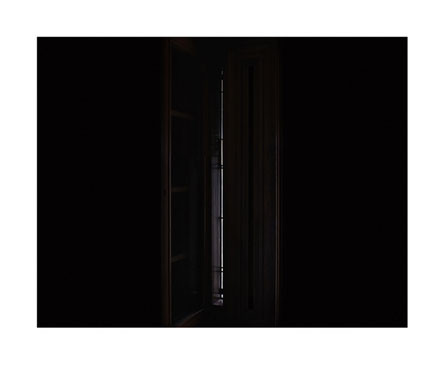Luisa Lambri
21 Nov - 21 Dec 2007
LUISA LAMBRI
The Directors of Thomas Dane Gallery are pleased to present the first London exhibition of Italian photographer Luisa Lambri. The exhibition will feature new works and, characteristically, they focus on Modernism and its legacies. The buildings featured in the exhibition include the Darwin D. Martin House, Buffalo, 1903-05 and the Hollyhock House, 1917-21, Hollywood (Frank Lloyd Wright), the Teatro Regio, Torino, 1973 (Carlo Mollino), the Cimitero Monumentale Brion, 1978 (Carlo Scarpa), the House in A Plum Grove, Tokyo, 2003 (SANAA) and the Rietveld Schroeder House, Utrecht, 1924-25 (Gerrit Rietveld).
Lambri’s almost abstract and ethereal photographs stand apart from typologies and documentary traditions of architectural photography. Lambri places herself and the viewer within the mostly domestic architecture, proposing a more personal and intimate recording of the building’s atmosphere, her experience of the space and her developing relationship to it. Her approach could be described as a form of self-portraiture. It oscillates between empirical repre-sentation and abstract subjectivity.
Lambri combines traditional means and new digital techniques in order to further liberate her work from pure documentation. This digital adjustment appears invisible yet it is fundamental to her photographic process, allowing her to create a final image whose atmosphere is capable of transcending not only the building’s function but also its location. Her choice of titles become literal examples of this in that they refer only to the name of each building, mentioning neither the architect nor the location. Frequently working in series, Lambri isolates a detail – often an aperture, a window, some shutters or blinds - which is declined in delicate variations of light and shade. Here minute changes between images within the sequence emphasise themes of space and the passing of time, as well as referencing photographic and art-historical preoccupations.
In this vein, a new suite of six views from Wright’s Darwin D. Martin House are reduced to mysterious slivers of light interrupting the darkness in what might be read as an homage to Dan Flavin or even Vladimir Tatlin. In contrast, a pair of images taken within Scarpa’s Cimitero Monumentale Brion, outside Venice, transforms brutalist concrete to a light-suffused abstraction. Rietveld’s famous Rietveld Schröeder House is distilled to essential primary colours, conjuring Suprematist references, while the ceiling of Carlo Mollino’s Teatro Regio in Turin, is metamorphosed into fractal, almost gem-like images.
The work is given its ultimate meaning when it is carefully installed and adapted to a new space, and the relationship between composition and space, and between the viewer, the object and the space itself is established.
The exhibition will take place in the main galleries in Duke Street as well as in the nearby Annex at 14 Mason’s Yard.
The Directors of Thomas Dane Gallery are pleased to present the first London exhibition of Italian photographer Luisa Lambri. The exhibition will feature new works and, characteristically, they focus on Modernism and its legacies. The buildings featured in the exhibition include the Darwin D. Martin House, Buffalo, 1903-05 and the Hollyhock House, 1917-21, Hollywood (Frank Lloyd Wright), the Teatro Regio, Torino, 1973 (Carlo Mollino), the Cimitero Monumentale Brion, 1978 (Carlo Scarpa), the House in A Plum Grove, Tokyo, 2003 (SANAA) and the Rietveld Schroeder House, Utrecht, 1924-25 (Gerrit Rietveld).
Lambri’s almost abstract and ethereal photographs stand apart from typologies and documentary traditions of architectural photography. Lambri places herself and the viewer within the mostly domestic architecture, proposing a more personal and intimate recording of the building’s atmosphere, her experience of the space and her developing relationship to it. Her approach could be described as a form of self-portraiture. It oscillates between empirical repre-sentation and abstract subjectivity.
Lambri combines traditional means and new digital techniques in order to further liberate her work from pure documentation. This digital adjustment appears invisible yet it is fundamental to her photographic process, allowing her to create a final image whose atmosphere is capable of transcending not only the building’s function but also its location. Her choice of titles become literal examples of this in that they refer only to the name of each building, mentioning neither the architect nor the location. Frequently working in series, Lambri isolates a detail – often an aperture, a window, some shutters or blinds - which is declined in delicate variations of light and shade. Here minute changes between images within the sequence emphasise themes of space and the passing of time, as well as referencing photographic and art-historical preoccupations.
In this vein, a new suite of six views from Wright’s Darwin D. Martin House are reduced to mysterious slivers of light interrupting the darkness in what might be read as an homage to Dan Flavin or even Vladimir Tatlin. In contrast, a pair of images taken within Scarpa’s Cimitero Monumentale Brion, outside Venice, transforms brutalist concrete to a light-suffused abstraction. Rietveld’s famous Rietveld Schröeder House is distilled to essential primary colours, conjuring Suprematist references, while the ceiling of Carlo Mollino’s Teatro Regio in Turin, is metamorphosed into fractal, almost gem-like images.
The work is given its ultimate meaning when it is carefully installed and adapted to a new space, and the relationship between composition and space, and between the viewer, the object and the space itself is established.
The exhibition will take place in the main galleries in Duke Street as well as in the nearby Annex at 14 Mason’s Yard.

